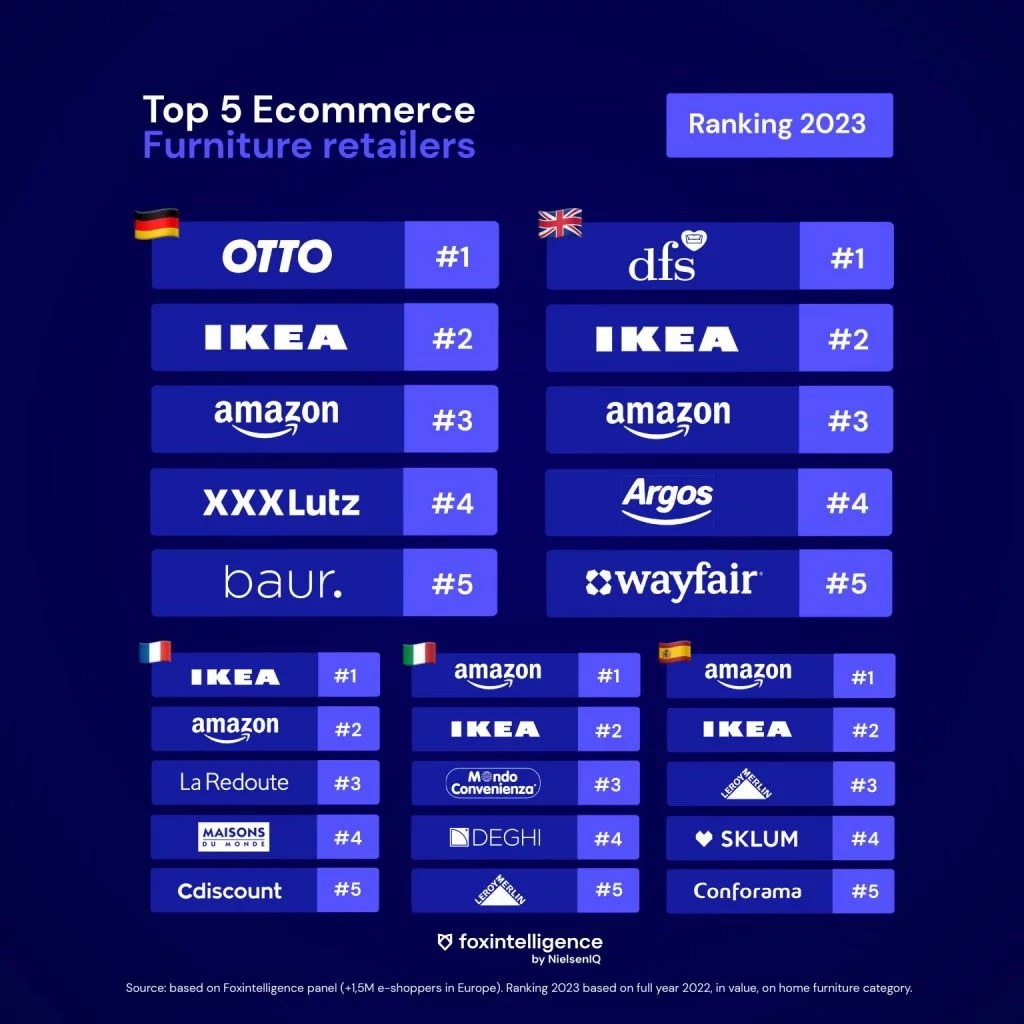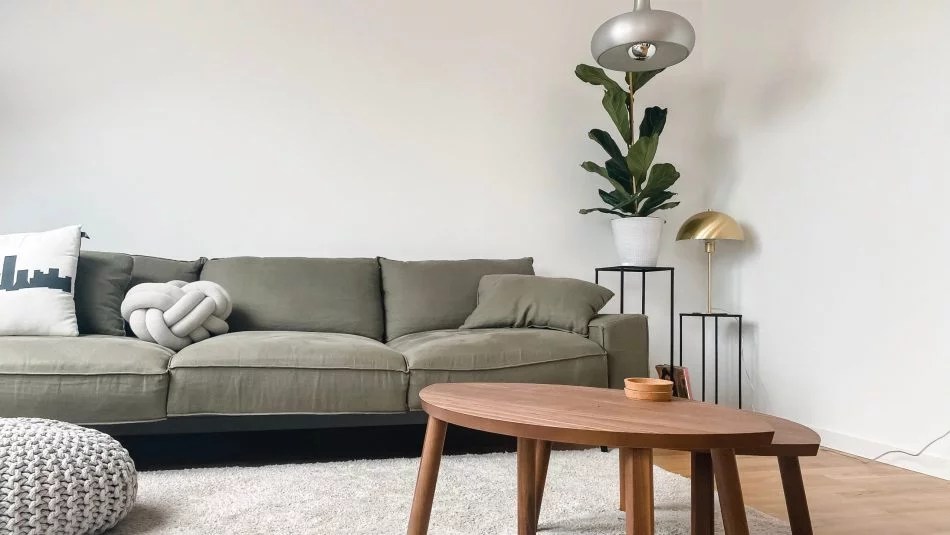The Relationship of E-shoppers to the Decoration and Furnishings of Their Home
Consumers crave comfort and cosy cocoons. Our relationship to our accommodations has evolved with the lockdowns and the obligation to work remotely: interiors have undergone a transformation, becoming both living spaces, places of work and places of leisure. The need to feel better at home has increased with time spent there. However, home improvement and renovation projects, along with a thirst for redecoration were blossoming just as retailers were facing the shut down of their physical stores. The fallback solution? Shop online!
Regarding their purchases in this category, the average expenditure is highly heterogeneous between Europeans. The Germans and the French spend the most on the furniture and decoration category, averaging €645 in Germany and €629 in France. Further behind, the UK (€509), followed by Italy (€369). Meanwhile, the Spaniards were the most frugal in 2022, spending an average of €336 on furniture and decoration.
Fun fact: when we look at average spending on furniture and decoration by gender, men are the biggest spenders -in all 5 countries.

Diversification, Marketplace, Second-Hand: as E-commerce Grows, Traditional Brands Fight Back
As the digitalization of the furniture and decoration market takes off, brands must adapt. In a market historically dominated by physical points-of-sale, traditional leaders have had to up their game to respond to new market realities.
Marketplaces, online workshops, virtual showrooms, click & collect: if they want to capture the growth of the sector, brands must deliver an online customer experience to match.
Maisons du Monde has launched its marketplace. At the time of the launch, the platform was offering over 200 brands and 25,000 references. With a clear objective: to increase site traffic and boost its turnover.
In early 2023, Monoprix opened its first Monoprix Maison store: its first shop entirely dedicated to interior design, aiming to deploy the concept as a franchise before the end of the year. Previously, the brand’s stores only offered a decoration section. Yet, the ambition was already there -10 to 12 decoration collections in store yearly, not counting collections in collaboration with renowned personalities.
Fashion brands are making a breakthrough and leap into the home universe. Like Zara Home and H&M Home, each with their website (and physical stores!) dedicated to the world of furniture and decoration. Bensimon, historically a ready-to-wear women’s brand, is also moving into the lifestyle field, with boutiques specializing in the art of living.
Digital Players vs Traditional Brands – A Battle for Market Share
Amazon ranks first in Italy and Spain as a furniture brand, both in terms of sales and value. The American giant comes in 2nd place in the ranking in France, and only 3rd in Germany and the UK.
Ikea is still going strong: the brand ranks in 2nd position in France, Italy and Spain, and 3rd in Germany and the UK.
The brand has managed to evolve and meet consumer expectations, taking advantage of the booming market. It now offers home delivery – a service implemented during the confinements. In stores, we can find the ‘As-is’ section: discontinued items, display models, and second-hand articles at bargain prices. If consumers can buy preloved products in-store, they also have the possibility of reselling what they no longer use. (You can find a buyback calculator on the brand’s website.)
As Traditional Players Go Digital… DNVBs Open Physical Stores
While historic leaders learned to digitize to capture market share in the furniture and decoration sector, DNVBs took the opportunity to … open physical stores. After offering corners at Le Bon Marché and several Monoprix, the online flea-market Selency has opened a permanent store at BHV Marais.
L’Armoire de Bébé, a historic pure player, has opened around 10 physical stores since 2021.
Meanwhile, Leroy Merlin is launching its first Naterial showroom in France – its new brand dedicated to the garden and outdoor design sector.
Bye-Bye Made.com
On the other hand, the online furniture store Made.com went out of business at the end of 2022. And yet, its economic model seemed enticing: a no-stock, online-only store. Customers pre-ordered on the brand website, and production only started when orders reached a set quota. Unfortunately, the current climate deeply affected the brand production – a drop in demand, combined with supply chain disruptions worldwide, have caused the business model to collapse.




